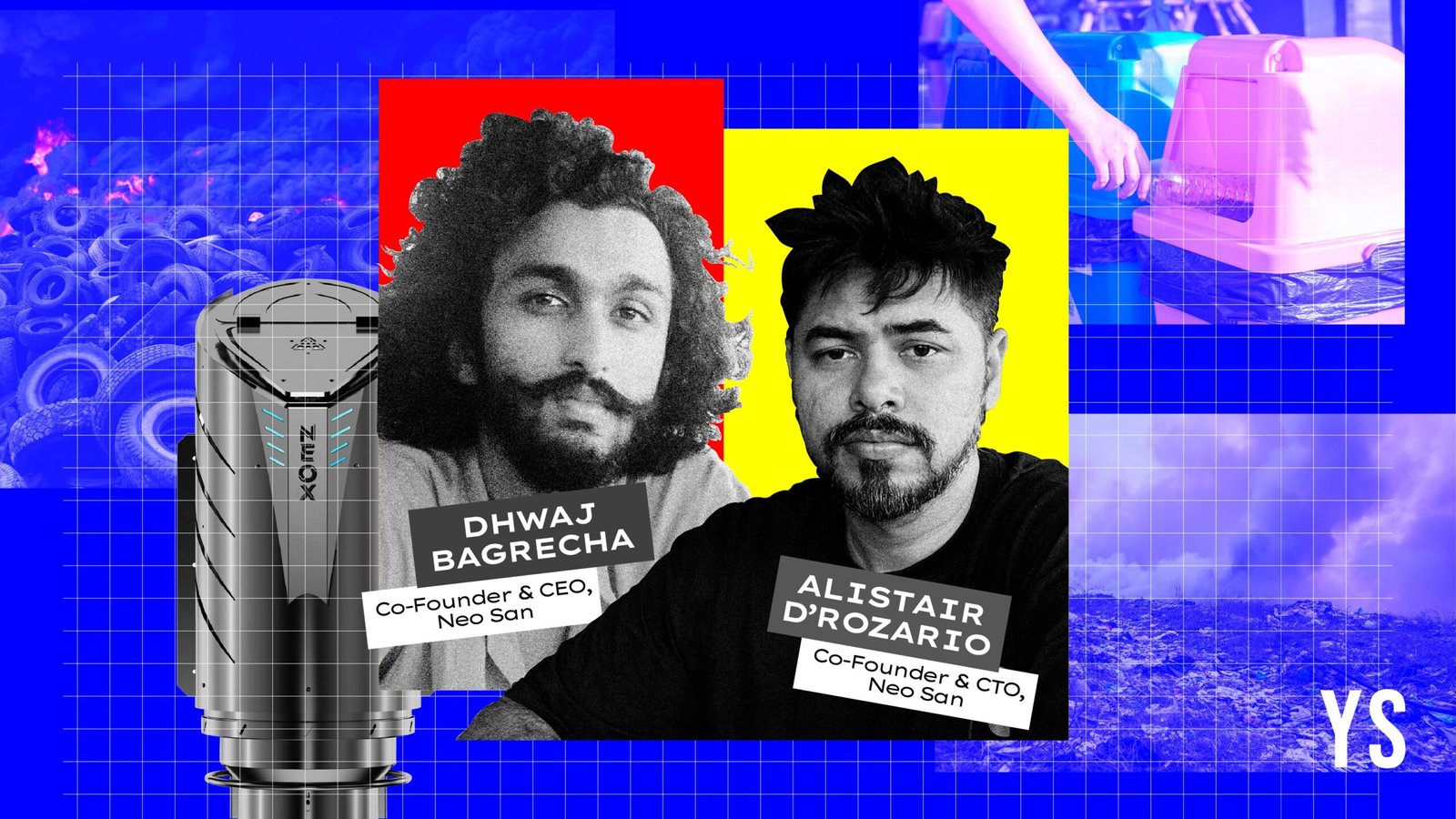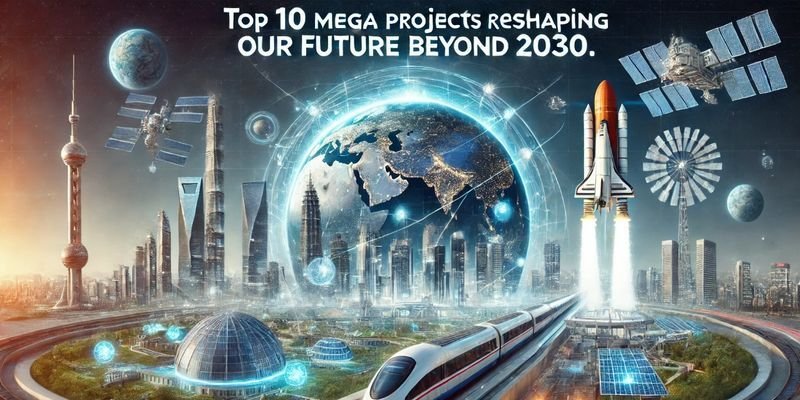Startup
Neo San wants to decentralise India’s waste management by making incinerators more efficient

Waste incinerators have a reputation problem. Research has shown that older incinerator technology and infrequent maintenance schedules are linked to health issues, including certain cancers.
The problem is even worse in India where non-biodegradable waste, which ends up in landfills, is burned in the open.
Enter Neo San, a Bengaluru-based startup that aims to decentralise India’s waste management system by helping its customers treat waste at its source. Neo San’s incinerators burn waste with 90% less emissions than traditional incinerators.
“Incineration has a bad name. People confuse it with burning. Fires are not the same. You have fires burning waste in open grounds at 400-500 degrees Celsius, and then you have had the traditional incinerators that were burning waste at 800 degrees Celsius and producing harmful fumes,” says Dhwaj Bagrecha, Co-founder and CEO of Neo San.
Disposal without the long drive
Before launching Neo San, Bagrecha researched how non-recyclable waste is handled in India. According to him, waste is first segregated, and washed with chemicals and the remaining chemical-filled sludge is burned—a process that’s harmful to the environment.
Neo San’s incinerators address this issue by burning as much waste as possible at the source.
According to the company’s website, its process can help reduce emissions from garbage trucks and other modes of waste transport.
“Governments save money, corporations save money, and land is saved over time,” the co-founder adds.
What does Neo San offer?
The company currently sells two models of its incinerators, Neo-X and Neo-XT, that can process waste ranging from multi-layered packages to bio-medical waste between 25 kilograms per cycle to 60 kgs per cycle. The machines’ temperature reaches 1200 degrees Celsius in two minutes with electricity that costs less than Rs 1/kg of waste.
Another critical feature of Neo San’s incinerators is data collection. The startup’s incinerators collect data on the waste it burns, including how much emissions it managed to cut down and the kind of waste it burned in the cycle.
“The more we understand the patterns of waste management, the more we can understand the consumption patterns. The more data we have around gas emissions, energy consumed, and how much waste is produced, the better we can build our systems,” says Bagrecha.
This helps the startup understand and perfect the product. Neo San also plans to share the data with its clients going forward, which will help companies understand and account for their carbon footprint.
“We are not here to replace the existing system completely. The sector needs large players and the government’s system in place,” Bagrecha says. “But the system could use players like us to help contain a large amount of rejected waste.”
The origin
Bagrecha and Co-founder Alistair D’rozario met in 2018 while the former was working for a steel straws manufacturing company. At the time, D’rozario was developing a machine to treat menstrual waste.
As time passed, their paths crossed frequently, and Bagrecha decided to join the team D’rozario had put in place to develop an incinerator meant to target a specific kind of waste.
They zeroed in on the name Neo San, which brings together two things the duo is passionate about—the Matrix series, where the protagonist goes by the name Neo, and sanitation.
After establishing Neo San in 2022 as a private limited company, D’rozario focused on technology, while Bagrecha focused on ground research and understanding the marketing side.
“Decentralised waste management is a very new concept, so there was nothing out there for us to copy,” he says.
The company spent five years testing the product, seed funding its development and research from their own pockets.
As research deepened, which Bagrecha recalls included driving around with the machine they developed to customers and requesting feedback on their products, he realised that their product should help eliminate a broader range of waste products. Soon, they began experimenting with packaging materials. A few years later, Neo-X was born.
“We knew we had a good product, and we knew we would have no trouble selling it,” says Bagrecha.
However, finding the right investors took a lot of work. The product is capital-heavy and requires zero compromise when it comes to the raw materials as it needs to maintain quality and safety.
Bagrecha says there were days when they could not get a single meeting because of the negative image attached to the word ‘incineration,’ and then there were days when he would leave the product with a potential client for six months, paying for the service out of his pocket to change people’s mindsets around what their incinerators could do.
Slowly, non-profit organisations started taking notice of Neo San’s incinerators, and while closely collaborating with these organisations, such as Ecogram, companies began taking notice. The product took almost two years to establish itself in the market.
In June, Neo San raised $1.5 million in a seed funding round from investors Ashish Kacholia, Indian pro-golfers Anirban Lahiri and S. Chikkarangappa, Aaradhana Jhunjhunwala, Aman Poddar, and Adithya Mathews among others.
The company has sold 150 units of its incinerators, Bagrecha says. Its clients include Bengaluru International Airport and Government of Karnataka to multinational companies like TATA Steel and Microsoft.
Neo San is targeting a market that has room for growth. India’s market for solid waste management is expected to grow at a compound annual growth rate of 7.5% between 2021-2026, according to data from the U.S. International Trade Administration.
The country’s Central Pollution Control Board has also projected that the annual waste generation in India will rise to 165 metric tons by 2030, with an increase in hazardous waste, plastic, e-waste and bio-medical waste.
Journey ahead
Neo San is all set to roll out its next model of incinerators called Atom that can burn up to 1 tonne of waste across a broader range of industries including chemical waste, automobile industry waste and others.
Bagrecha says the product is almost ready, and the company is making final tweaks to it, targeting its launch in August.
Neo San also plans to roll out more models of their smaller incinerator, Neo-X, with varying higher capacities to suit a range of clients. The new funds will be targeted at making sure its products are “market-ready.”
The company, which currently has clients across major cities in India, is also looking forward to breaking into the Middle East Africa, and Japan this financial year.
Startup
Flipkart’s delivery arm Instakart reports widening losses, lower revenue in FY24

Flipkart’s delivery service arm Instakart’s FY24 losses increased multifold to Rs 1718.4 crore, from Rs 324.6 crore in the previous year, hurt by higher expenses and marginally lower revenues.
The company, which is in the logistics, warehouse, courier and allied services business, clocked an operating revenue of Rs 12,115.3 crore in FY24, 5% lower than Rs 12,787.4 crore it posted a year ago, according to filings made with Toefler.
During the period, the company’s total expenses increased 6% to Rs 14,149.4 crore, mainly driven by employee benefit and other expenses.
Logistics services accounted for the majority (about 78%) of Instakart’s total operating revenues, with Rs 9,429.8 crore, marginally lower than what it collected in the previous year.
Warehousing services, which accounted for about 10% of total operating revenues, witnessed a 28.4% drop in revenue, while collection services, which accounted for 12%, remained stable.
Just a week ago, Flipkart Internet reported a 21% rise in FY24 revenue at Rs 17,907.3 crore helped by rising income from its advertising services.
Flipkart India Ltd, which is Flipkart’s business-to-business (B2B) arm, reported a 26.4% rise in revenue from operations at Rs 70,541.9 crore in FY24.
Startup
Google Cloud to boost support for early-stage AI startups with new programmes, partnerships

has rolled out a range of programmes and partnerships to accelerate the growth of AI startups In India. The initiatives, announced at an AI Startups Summit in Bengaluru, will support early-stage AI founders in building, scaling, and expanding their customer base through the utilisation of Google Cloud services.
The tech giant recently introduced Emerging ISV Partner Springboard—a 12-week programme designed to fuel growth for AI startups. Participants will benefit from hands-on support in creating go-to-market assets, consultations with Google AI experts for product refinement, guidance on technical architecture best practices, and streamlined onboarding to Google Cloud Marketplace.
“Google is committed to empowering AI startups to drive innovation and growth. These initiatives demonstrate our dedication to providing critical support and resources to early-stage founders, helping them build and scale successful AI-powered businesses,” said Manish Gupta, Senior Director, Research, Google DeepMind.
During a fireside chat at the Global Google Cloud Summit, Google Cloud CEO Thomas Kurian applauded startups leveraging AI and cloud technology.
“At Google Cloud, our mission is to support these pioneers by providing the essential tools, resources, and mentorship they need to thrive. Through strategic partnerships, tailored programs, and advanced infrastructure, we are committed to enabling businesses to scale their impact and drive the next wave of digital transformation,” said Kurian.
Early-stage founders will receive enhanced support through the Google for Startups Cloud Program, which will offer $200,000 in Google Cloud credits over two years. AI-based startups will receive even greater support, receiving $350,000 in credits to address the demanding computational needs of advanced AI development, the company said in a statement.
In addition, Google has collaborated with Y Combinator to provide exclusive access to NVIDIA H100 GPUs and Google Cloud TPUs, along with cloud credits, support, and mentorship for its Summer 2024 group of AI-focused startups.
Furthermore, the tech giant is also joining forces with early-stage accelerators and incubators such as 500, StartX, and Berkeley Skydeck to provide early-stage founders with a special package, including Google Cloud credits, expert advice, and technical workshops
Earlier, the California-headquartered firm also announced the launch of Startup School: GenAI, a four-week training programme designed to help startups leverage AI.
Startup
Future in the Making: Top 10 Mega Projects Shaping Our World Beyond 2030

Mega projects represent the pinnacle of human ambition and engineering prowess, often involving colossal investments and extensive timelines. As we look beyond 2030, several monumental undertakings are set to reshape our world. Here’s an in-depth exploration of the top 10 most expensive megaprojects slated for completion after 2030.
10. Microsoft and OpenAI Data Center and Supercomputer – $100 Billion
In a bold move to advance artificial intelligence, Microsoft and OpenAI are collaborating on a data center project estimated at $100 billion. Dubbed “Stargate,” this U.S.-based facility aims to house an AI supercomputer equipped with millions of specialized chips, pushing the boundaries of AI capabilities. The project is currently in the planning stages, with operations expected to commence by 2028.
9. Forest City in Malaysia – $100 Billion
Forest City, a visionary urban development in Johor, Malaysia, encompasses four man-made islands spanning 30 square kilometers. Designed as a smart and green city, it integrates vertical greenery and cutting-edge technology to create an idyllic living environment. Despite initial challenges, including low occupancy rates, recent initiatives such as the establishment of a duty-free zone aim to revitalize the project and attract both residents and investors.
8. California High-Speed Railway – $100 Billion
The California High-Speed Rail project seeks to connect major cities across the state with a fast, efficient transportation system. With an estimated cost of $100 billion, the project has faced delays and budget overruns. However, construction is progressing, with segments in the Central Valley under development. Completion is anticipated in the 2030s, promising to transform travel within California.
7. Delhi-Mumbai Industrial Corridor – $100 Billion
The Delhi-Mumbai Industrial Corridor (DMIC) is an ambitious infrastructure project aimed at developing industrial zones between India’s capital, Delhi, and its financial hub, Mumbai. Spanning 1,500 kilometers, the corridor includes smart cities, industrial clusters, and high-speed freight lines. With an investment of $100 billion, the project is set to boost economic growth and is expected to be completed in phases, extending beyond 2030.
6. King Abdullah Economic City – $100 Billion
Located along Saudi Arabia’s Red Sea coast, King Abdullah Economic City (KAEC) is a massive development project covering 173 square kilometers. With an investment of $100 billion, KAEC aims to diversify the nation’s economy by attracting global businesses and tourists. The city features residential areas, industrial zones, and a major port. While parts of the city are operational, full completion is projected for the 2030s.
5. Silk City in Kuwait – $132 Billion
Kuwait’s Silk City, or Madinat al-Hareer, is a planned urban area intended to transform the nation’s economy. With an estimated cost of $132 billion, the project includes the construction of the world’s tallest tower, residential areas, and a free trade zone. The development aims to position Kuwait as a regional hub for commerce and tourism, with completion expected after 2030.
4. New International Space Station – $230 Billion
As the current International Space Station (ISS) approaches the end of its operational life, plans are underway for a new space station. With an estimated budget of $230 billion, this next-generation orbital platform will support scientific research, commercial activities, and international collaboration. Construction is expected to begin in the late 2020s, with full operations commencing in the 2030s.
3. Gulf Railway – $250 Billion
The Gulf Railway project aims to connect the six Gulf Cooperation Council (GCC) countries—Saudi Arabia, Kuwait, Bahrain, Qatar, the United Arab Emirates, and Oman—through a 2,177-kilometer rail network. With an estimated cost of $250 billion, the railway will facilitate trade and travel across the region. While progress has been slow, recent commitments suggest completion is targeted for the early 2030s.
2. Neom City – $500 Billion
Neom is Saudi Arabia’s flagship mega-project, envisioned as a futuristic city powered entirely by renewable energy. With a staggering budget of $500 billion, Neom aims to incorporate smart city technologies, sustainable living, and advanced robotics. The project includes The Line, a 170-kilometer linear city designed to house 9 million residents. Construction is underway, with significant milestones expected in the 2030s.
1. Trans-European Transport Network (TEN-T) – $600 Billion
The Trans-European Transport Network (TEN-T) is an ambitious initiative by the European Union to enhance connectivity across the continent. With an estimated investment of $600 billion, the project encompasses roads, railways, airports, and waterways, aiming to facilitate the seamless movement of goods and people. The comprehensive network is slated for completion by 2050, with significant progress expected post-2030.
These mega projects exemplify human ingenuity and the relentless pursuit of progress. As they come to fruition in the coming decades, they promise to reshape economies, enhance connectivity, and pave the way for a more interconnected world.
-

 Startup Stories1 year ago
Startup Stories1 year agoWhy Millennials, GenZs Are Riding The Investment Tech Wave In India
-

 Startup Stories1 year ago
Startup Stories1 year agoStartups That Caught Our Eyes In September 2023
-

 Startup Stories1 year ago
Startup Stories1 year agoHow Raaho Is Using Tech To Transform India’s Fragmented Commercial Trucking
-

 Startup Stories12 months ago
Startup Stories12 months agoMeet The 10 Indian Startup Gems In The Indian Jewellery Industry’s Crown
-

 Crptocurrency8 months ago
Crptocurrency8 months agoLither is Making Crypto Safe, Fun, and Profitable for Everyone!
-

 Startup Stories1 year ago
Startup Stories1 year agoHow Volt Money Is Unlocking The Value Of Mutual Funds With Secured Lending
-

 Startup Stories1 year ago
Startup Stories1 year agoWhy Moscow-Based Kladana Considers Indian SME Sector As The Next Big Market For Cloud Computing
-

 E-commerce1 year ago
E-commerce1 year agoTop Online Couponing Trends To Watch Out For In 2016




